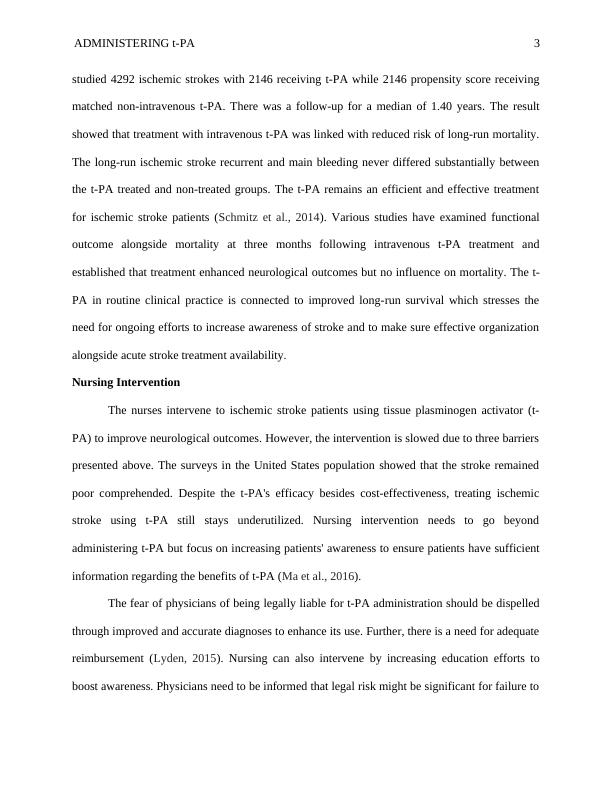Administering t-PA
7 Pages1377 Words65 Views
Added on 2023-03-23
About This Document
This essay discusses the administration of tissue plasminogen activator (t-PA) for acute ischemic stroke patients and its impact on neurological outcomes. It explores the clinical problem, evidence-based solutions, nursing interventions, patient care, and the role of health care agencies. Find study material, solved assignments, and essays on this topic at Desklib.
Administering t-PA
Added on 2023-03-23
ShareRelated Documents
End of preview
Want to access all the pages? Upload your documents or become a member.
Patients with Acute Ischemic Stroke and Thrombolytic Therapy
|6
|1229
|350
Technology in Healthcare: 3D Printing, Mobile Stroke Units, and Biosensors
|5
|1112
|260



